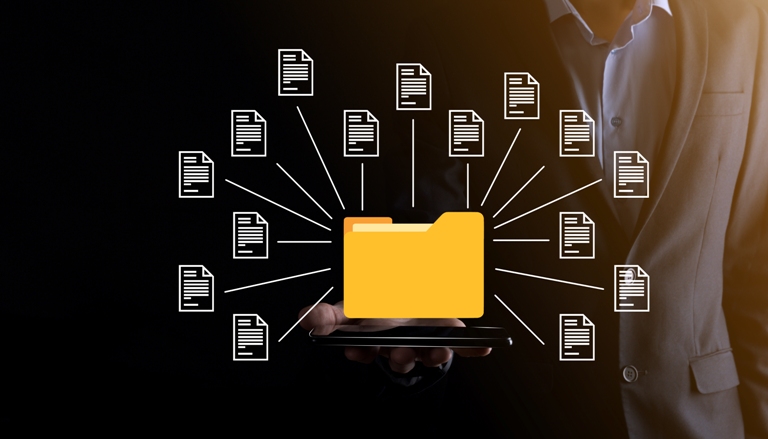In an age where citizens seek transparency, speed, and accountability, government organizations must evolve. One of the best ways to drive smarter governance is to shift from traditional paperwork to digital document management systems (DMS). These systems help streamline operations and allow faster, more informed policy decisions. With the growing volume of information, adopting a document management system for government organizations is no longer a luxury—it’s a necessity.

The Problem with Paper-based Systems
Many government agencies rely heavily on physical files, folders, and manual processes. While this may have worked in the past, today’s fast-moving world exposes several drawbacks:
1. Delayed Access: Finding a single file from a stack of paperwork can take hours or even days.
2. Vulnerability to Damage: Paper documents are prone to loss, theft, and damage from fire or water.
3. Storage Issues: Physical documents consume office space and increase administrative costs.
4. Poor Communication: Sharing documents between departments can be inefficient and error-prone.
5. Audit Difficulties: Tracking who accessed or changed a document is nearly impossible with paper.
These inefficiencies can directly affect the quality and speed of decisions made by policymakers.
Digital Transformation: Moving from Paper to Policy
Implementing a document management system for government organizations can solve many issues. A DMS converts physical documents into digital records, enabling automation, secure storage, and easy retrieval. Here’s how that influences policy and decision-making:
1. Real-time Access to Critical Data
A document management system allows:
- Quick searches by keyword, date, or document type.
- Simultaneous access for multiple users across departments.
- On-demand access from mobile or remote locations.
This ensures that decisions are based on timely and accurate information, especially in crisis situations.
2. Improved Information Security
Security is a top concern for public sector organizations. A document management system for government organizations provides:
- User access controls: Only authorized personnel can access sensitive documents.
- Encrypted data storage: Protects files from cyberattacks or data leaks.
- Audit trails: Every action—view, edit, or share—is recorded.
A secure document management system for government organizations builds public trust and ensures regulatory compliance.
3. Increased Collaboration Across Departments
Policy development often requires input from multiple departments and stakeholders. A DMS enables:
- Shared document editing with version control.
- Automated workflows for approvals and reviews.
- Notifications for pending tasks or document updates.
This seamless collaboration leads to faster decision-making and unified policy outcomes.
How Document Management Systems Support Policy Outcomes
Beyond daily tasks, document management systems play a long-term strategic role in public administration:
A. Data-driven Policy Formulation
When agencies can easily access historical records, performance reports, and citizen feedback, they can make evidence-based decisions. Instead of relying on assumptions, policymakers can:
- Analyze past decisions and their impacts.
- Use data to forecast outcomes.
- Avoid repeating mistakes.
B. Policy Consistency and Alignment
With centralized repositories, governments can ensure that:
- Policy documents are updated in real time.
- Local departments follow national guidelines.
- Redundancies and conflicts are reduced.
This helps maintain consistency in decision-making across various levels of government.
C. Faster Response in Emergencies
Governments need to act quickly during natural disasters, health crises, or security threats. A good DMS enables:
- Immediate access to emergency plans and response protocols.
- Faster coordination among departments and responders.
- Quick distribution of updated guidelines to the public.
Real Benefits Observed by Governments
Governments that have implemented DMS report clear advantages:
1. Efficiency gains: Agencies save hours per week in document retrieval and filing.
2. Cost reduction: Less paper, printing, and storage, lower administrative expenses.
3. Audit readiness: Easily accessible records simplify inspections and compliance checks.
4. Public service improvement: Faster decisions lead to better service delivery and citizen satisfaction.
These results show how the document management system for government organizations goes beyond convenience—it actively improves governance.
What to Look for in a Government-focused DMS?
Not all DMS platforms are built the same. Government agencies should choose systems with features tailored to public sector needs:
1. Compliance and records retention: Ensure the system meets legal and regulatory standards.
2. Custom workflows: Design processes specific to your agency’s functions.
3. Integration capability: Seamlessly connect with ERP, HR, and communication tools.
4. Offline access and mobile support: Essential for field agents and rural offices.
5. Multilingual interface: Especially useful in diverse regions.
The right document management for government organizations must be scalable, secure, and user-friendly.

The Future: Intelligent Document Management
Technology continues to evolve, and so do document management systems. The future includes:
- AI for document summarization: Helps leaders digest large policy documents quickly.
- Auto-categorization: Machine learning tags documents automatically.
- Predictive workflows: Systems that suggest next steps based on document history.
As these technologies mature, document management for government organizations will become even more intuitive and powerful.
Conclusion
Government decisions shape society. To make informed, timely, and transparent decisions, agencies must embrace modern tools. Document management systems do more than store files—they enhance collaboration, secure sensitive information, and provide a foundation for data-driven policy. Investing in document management systems for government organizations isn’t just about going paperless—it’s about governing better, smarter, and faster.










